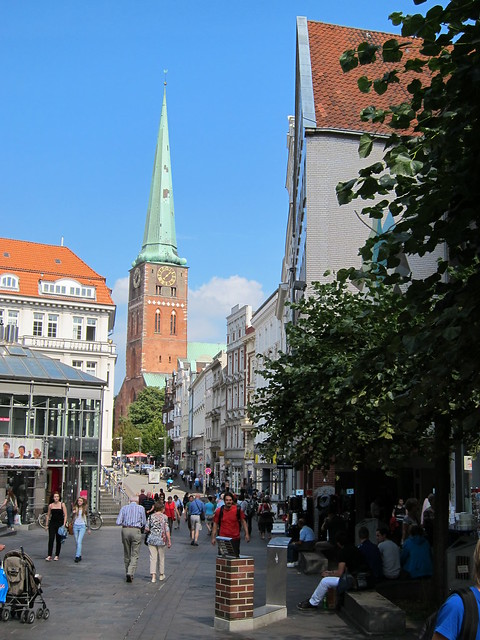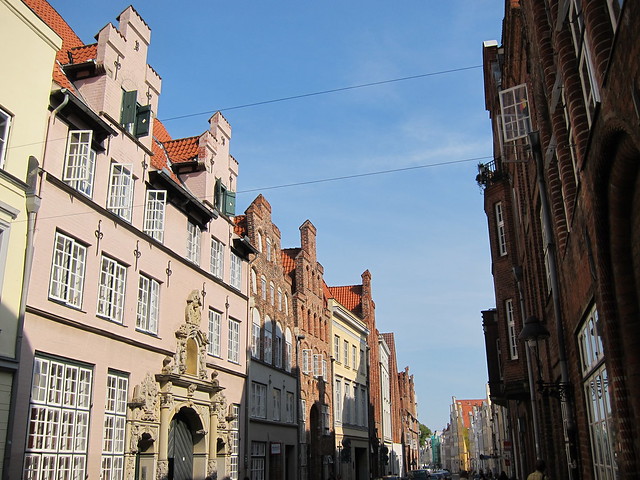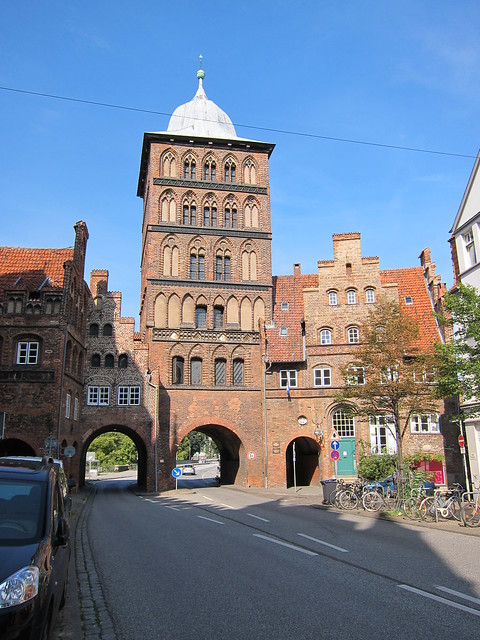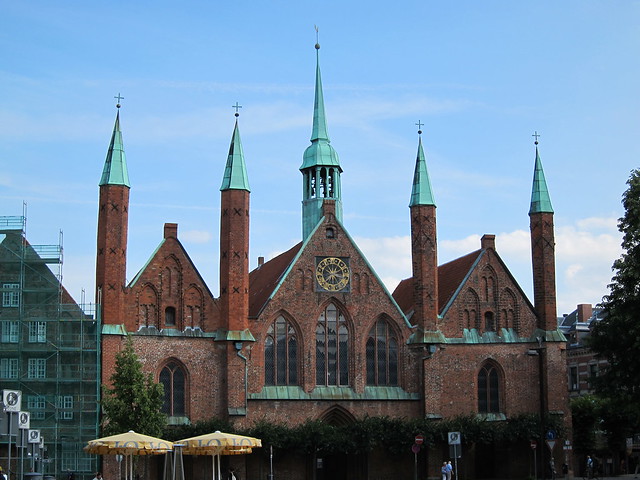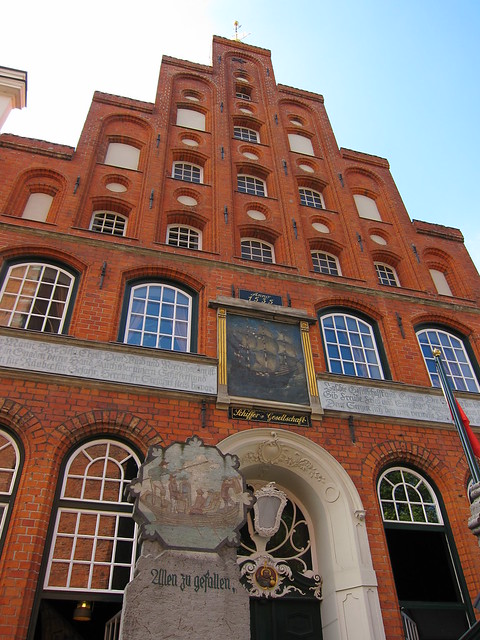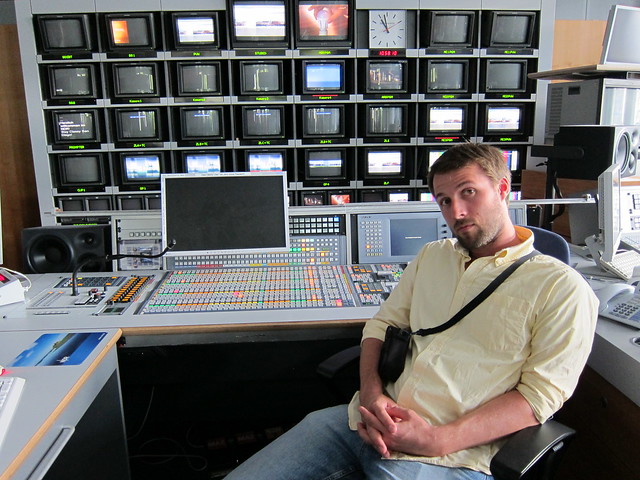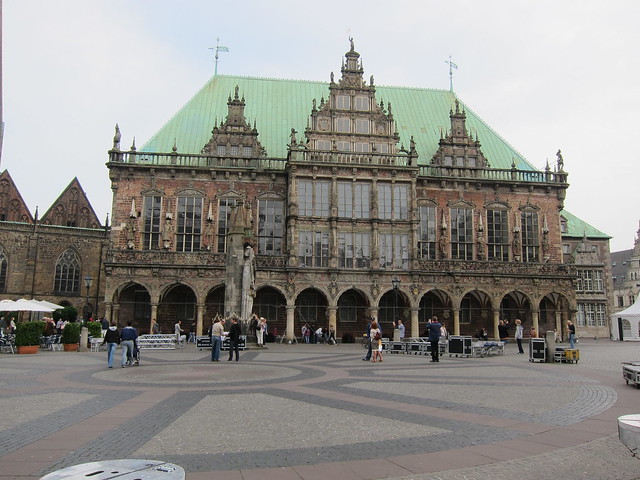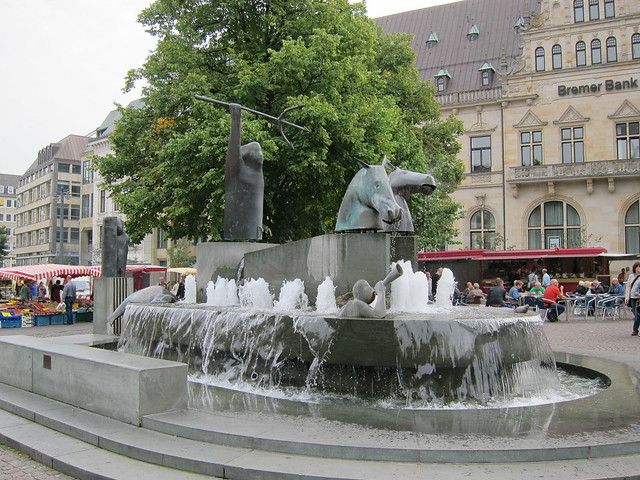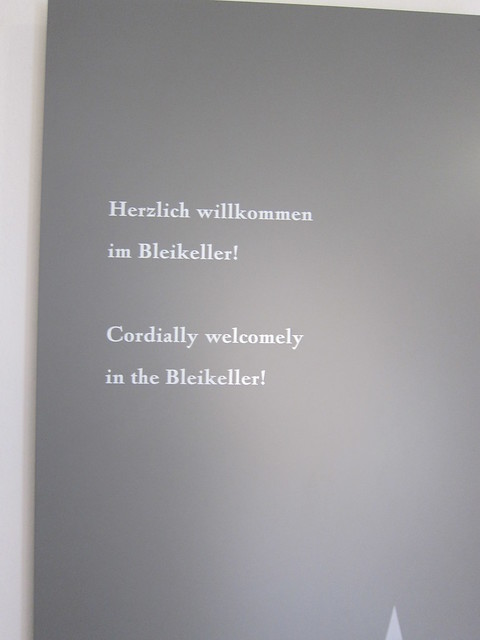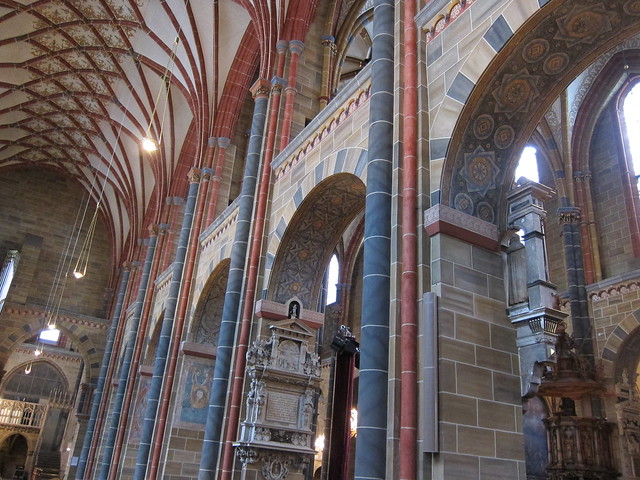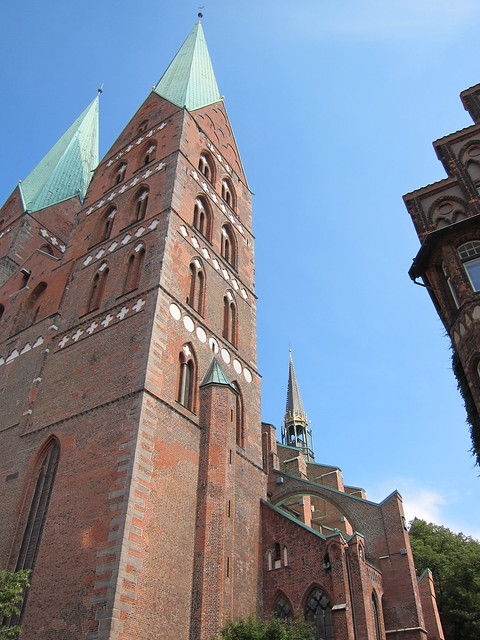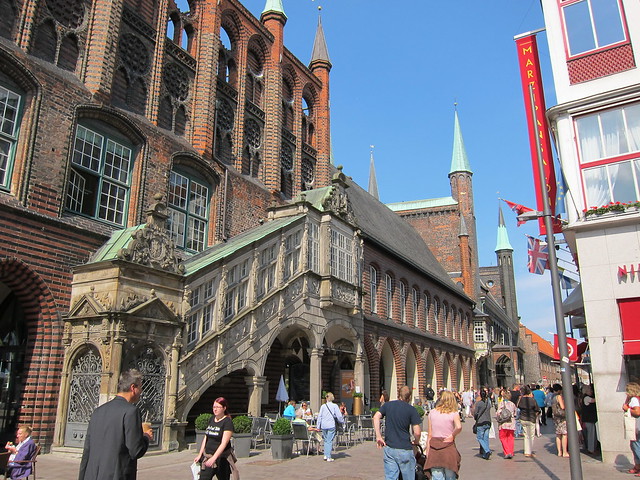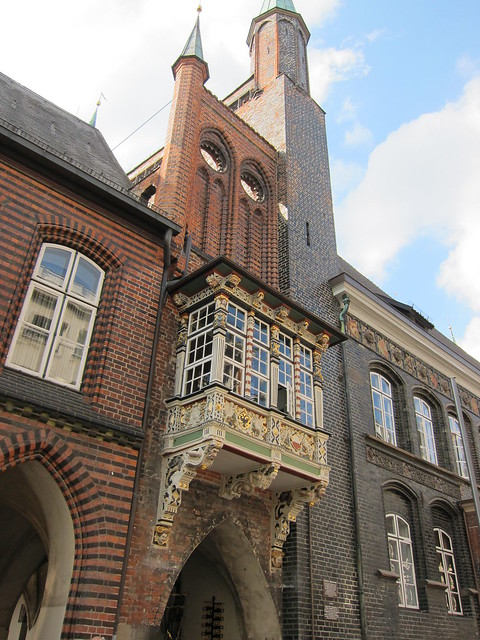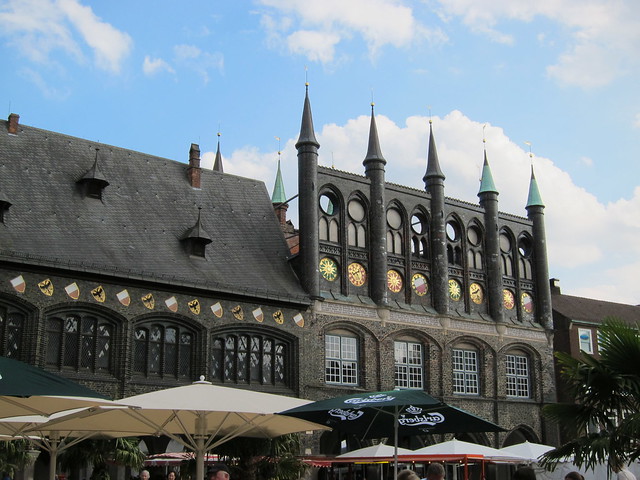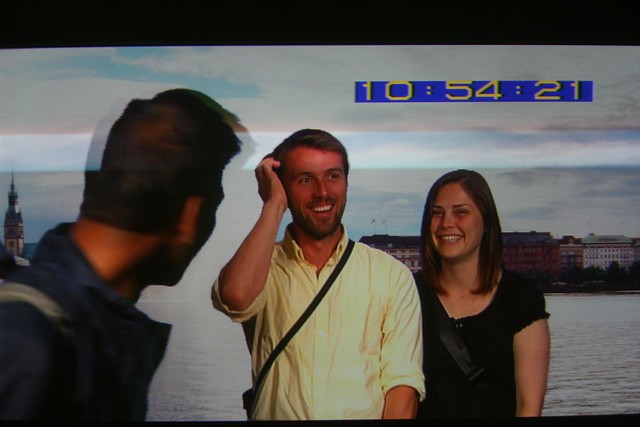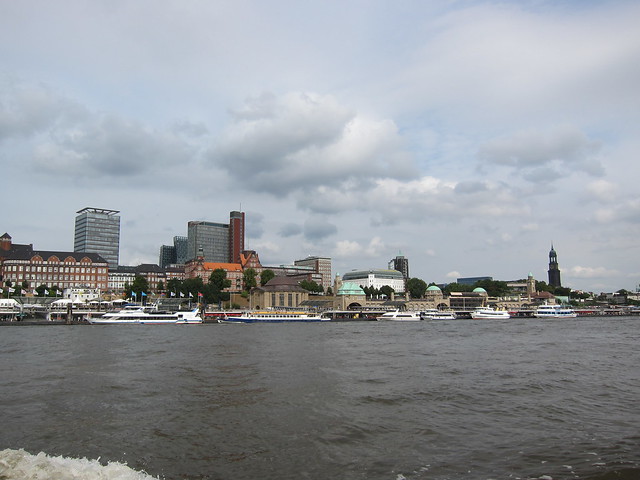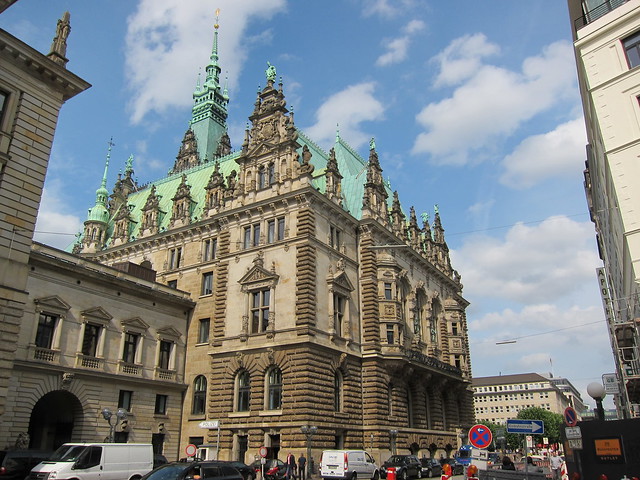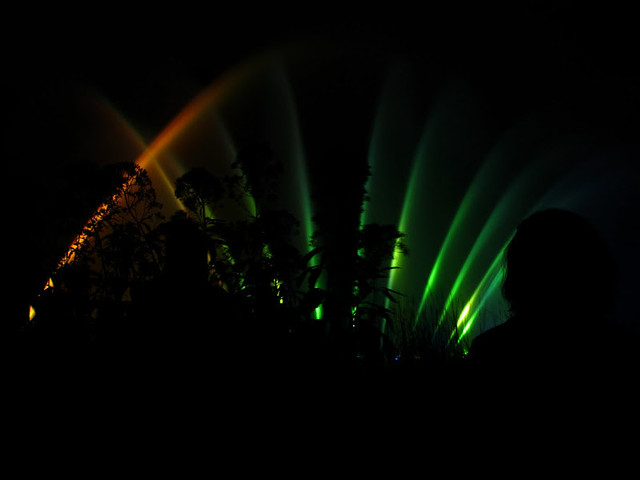Note to our accidental readers: I follow the statistics on the blog fairly closely. For example, September 2012 (in which we made a significant announcement regarding our Agricola strategy) saw the third most hits in any month since we began blogging. (The other two months were last July and October, when people still missed us and got to see our travels around Greece, respectively.) We didn't fully consider the ramifications of titling a recent blog entry "German Drinking Games." You'd be surprised how many people find our blog by searching for "German drinking games." I hope if you're arriving here looking for advice on how to drink like a German you're not terribly disappointed.
On part three of our epic tour de Deutschland we traveled deeper into the heart of East Germany, this time arriving at Dresden. Lots of people had told us that there are really beautiful things in the former East, but we didn't really know what to expect. Weimar was also an East German city, but it seemed more or less the same as other, West German cities that we'd seen (with its own, Weimarian character, of course.) Dresden, on the other hand, blew us away.
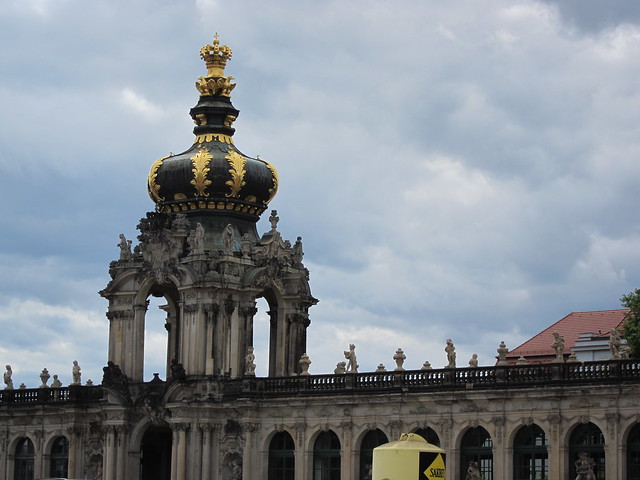
The old town area is covered with beautiful buildings, mostly Baroque but also some Renaissance and modern stuff, too. The whole city was destroyed in the war, and though much of it (thankfully) has been restored, there's still a lot that hasn't been. According to our tour guide, there used to be some 600 buildings of such grandeur (see photos above and below) in the city center, while today there are only 30 or so. From a purely geographic point of view I don't see how that would be possible, but I'm not going to argue with him. At any rate, it's a fantastic city center.
Below is part of the Zwinger Palace. Previously a part of the city's wall, the Zwinger underwent several expansions and renovations in the 17th through 19th centuries, giving it a garden, an orangery, and an art gallery. Apparently the garden/courtyard was used for a month-long wedding celebration involving jousting and other riding sports, including one where women would ride (side-saddle, so as not to reveal too much of their underskirt) and try to collect hanging rings.

The white bells hanging from the clock window are made of Meissen porcelain. This was the first hard-paste porcelain developed in Europe (China had it going on long before its European debut in 1708) and dominated the European porcelain market for decades. The bells, when not too cold, still chime the hours and quarter-hours; we were lucky enough to hear a little chime song, which sounded rather bright and birdsong-like to me.
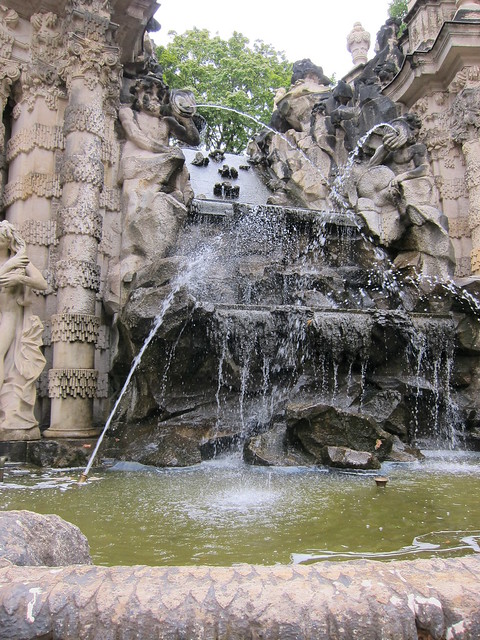
Above is a photo of a fountain in the Zwinger complex, and below another view of the courtyard.

The other buildings in the city were also beautiful. This is a view of a former palace (?) that is now part of the Dresden museum.

And another Dresden museum.

This is a rather interesting mural titled "Fürstenzug." It, like the bells at the Zwinger, is made of Meissen porcelain and depicts the progression of Saxon kings from the 12th through early 20th centuries. (You can see a high-res image
here.) The mural was only minimally damaged in WWII, owing to a few clever Dresdanians who painted the mural flat grey and, thus, made it extremely boring looking. It was impressive--more than a football field (either American or regular football) of Saxon rulers.
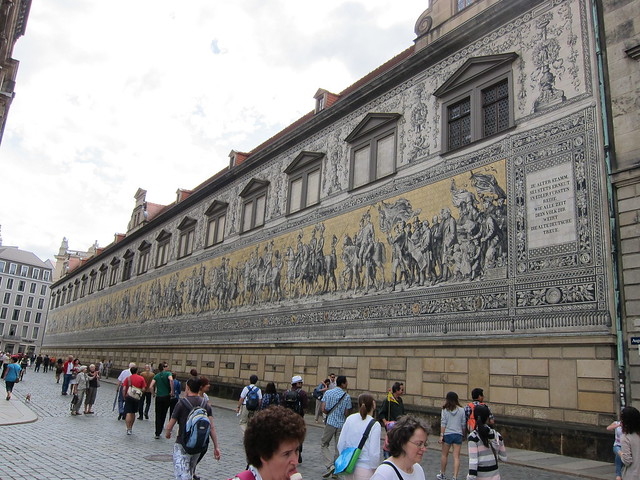
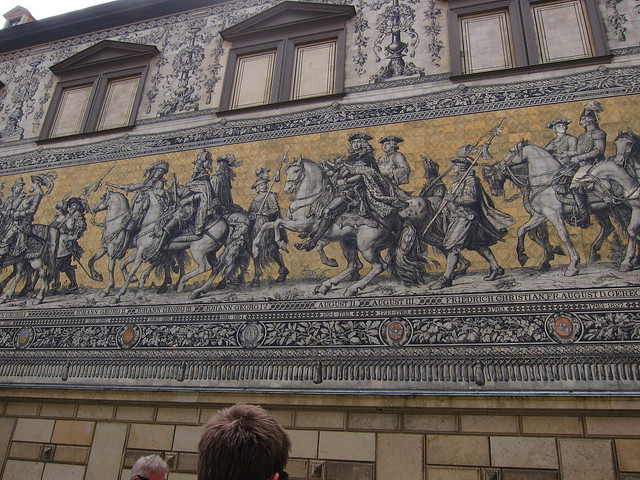
Despite Dresden's extremely non-religious population (only 10-15% of the population goes to church regularly), there are two extraordinary churches in the old town. The recently rebuilt Lutheran church, peeking out in the background below, has come to symbolize international cooperation--the church was rebuilt using funds from many different countries and
they used many of the same bricks to rebuild it!
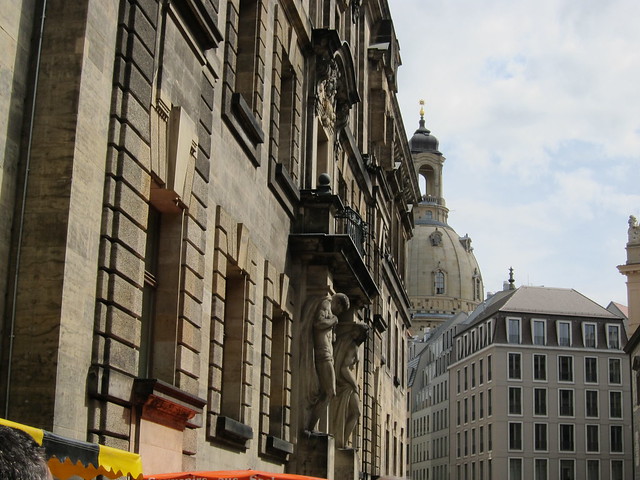
The other main church is, of course, a Catholic church. Both churches are extremely beautiful and in very different styles.
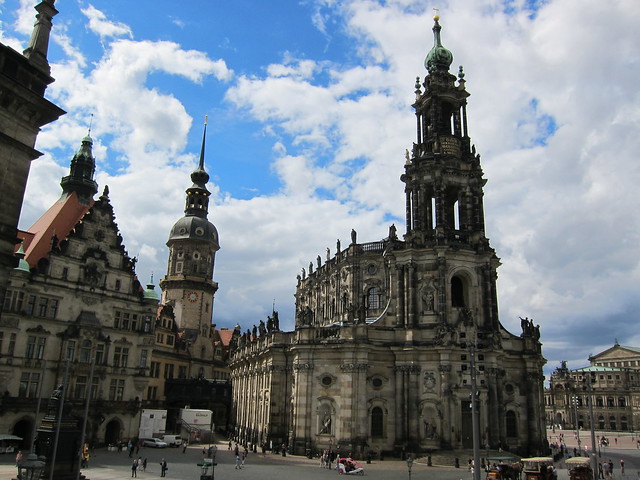

This is another view of the Lutheran church (the Frauenkirche) showing the black bricks that were part of the original, pre-WWII structure. Sadly, photography inside wasn't allowed, but it was brightly lit, owing to the many windows, and the altarpiece was original and pieced back together. Also, the original cross from the top of the church, crooked and rusted after the war, is on display near one of the inside doors. I found that cross particularly moving.


My favorite building in Dresden was the Opera House, shown below.
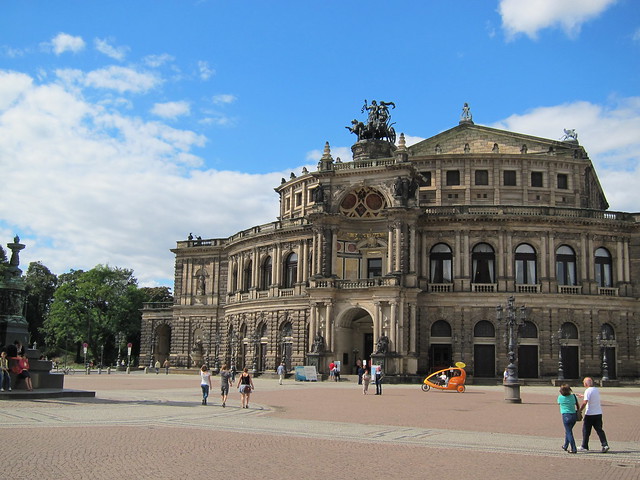
I'm not an architect, so forgive my lack of precision, but I like the combined styles of "round" and "triangle" on this building. Plus, it has great brickwork around the front and the domed balcony looks fantastic. I wish we could have seen the inside but it wasn't open to us. This opera house is well known for being the location of 25 or 30 different opera premieres, none of which I know.
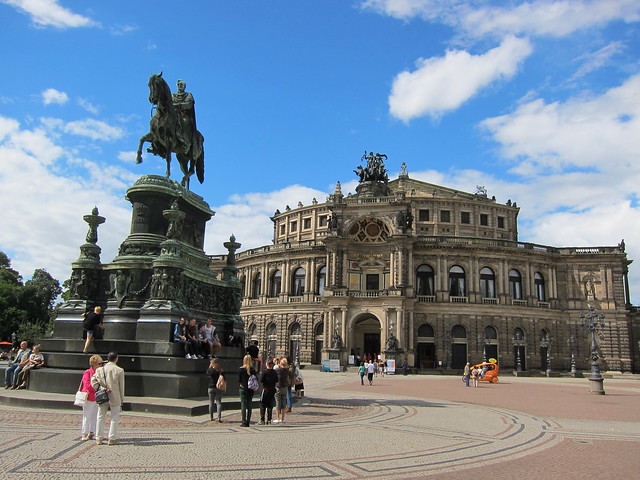
We crossed the Elbe river to the newer side of Dresden where we ate lunch with some new Humboldt friends, Alicia and Bryan, and we found this Church of the Three Kings, which we dutifully ascended.
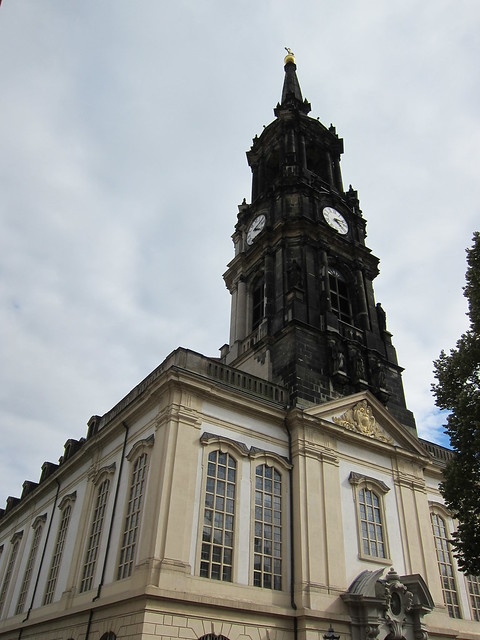
It was a great tower to climb because, unlike the more popular Frauenkirche
in the city center, this tower offers a view
of the city center.

And I made a mini-Dresden from the same tower.
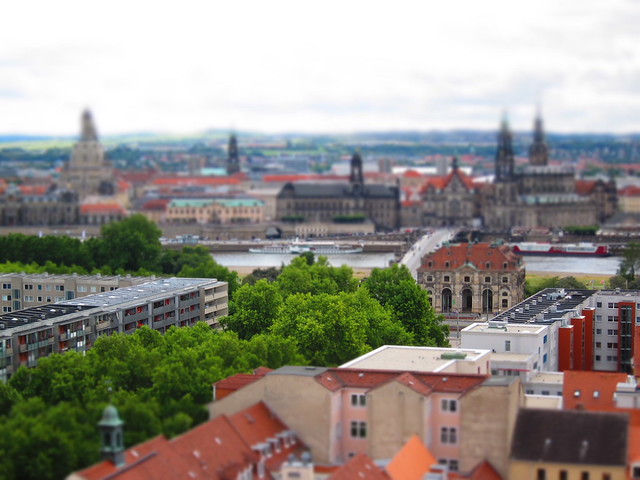
On our way back to our hotel in Dresden we passed this building, which is completely forgettable except for the glow-in-the-dark, larger-than-life spider in front of the main window.
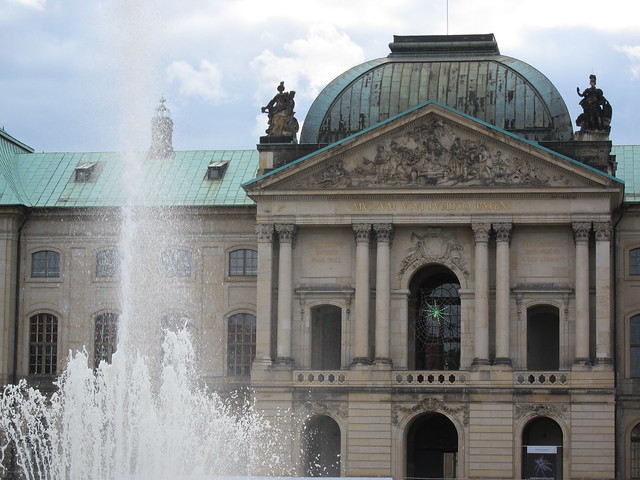
And we caught a brief period of sunshine and perfect weather as we walked by the outside of the Zwinger once more.
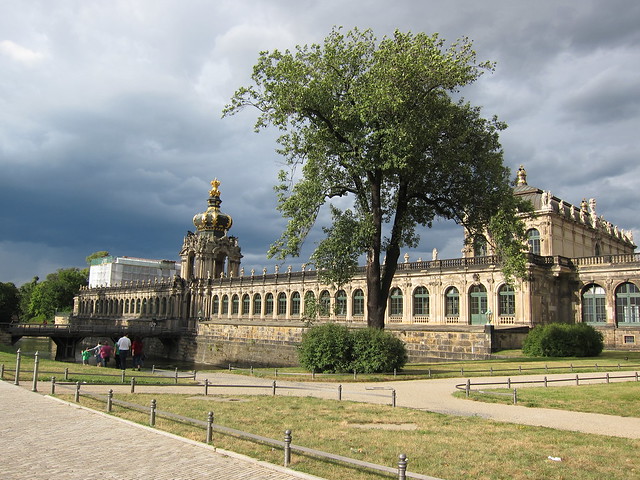
The next day took us to the capital of Germany and one of my favorite cities anywhere, Berlin. This time I (Sara stayed at the room to catch up on some sleep) took a tour of the Reichstag, the hall of Parliament. We'd previously been on the roof, but I hadn't seen the inside.
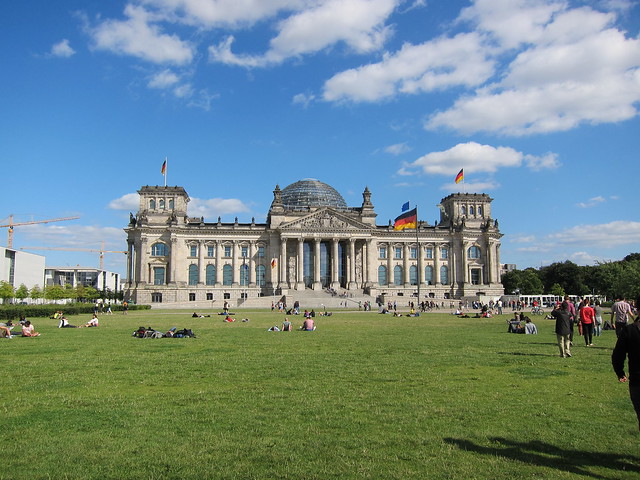
Early on in the tour I saw this wall and thought, "Wow. German attention to detail, huh? They can't even keep the walls of their parliament free of graffiti." Then I realized that is was deliberate--this graffiti was scribbled when the parliament building was partially toppled due to air raids in 1945.
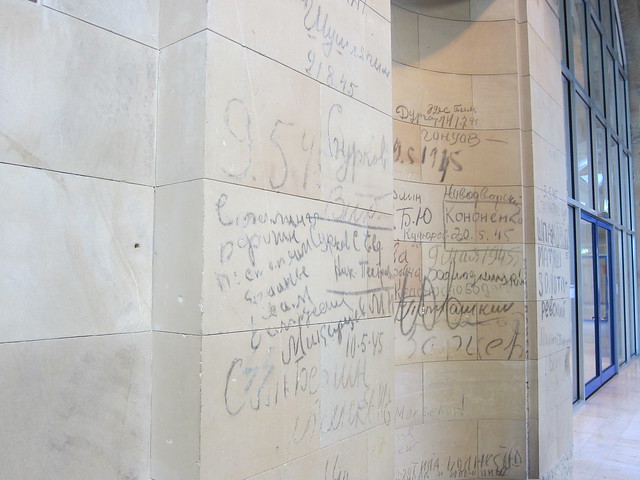
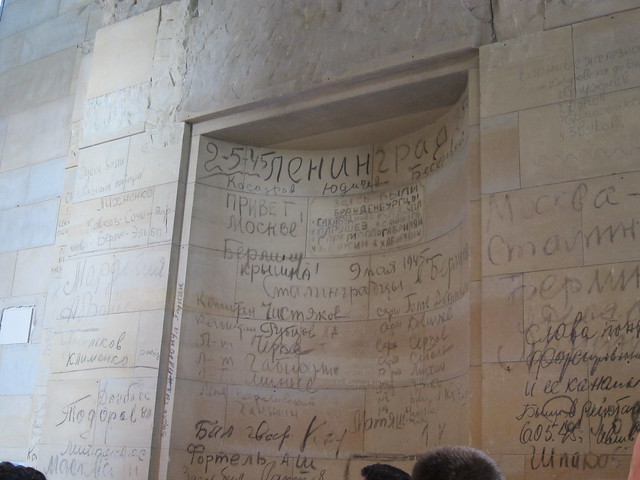
We got to enter the hall of parliament and enjoy a brief description of how German government works. I don't know all of the details, but Angela Merkel, when she's visiting, takes the front-right seat (as seen in this picture) in the left bank of seats. Also, Germany's system of government is huge and complicated, but has some really great ideas going for it (each member of parliament sits in an assigned block with their own party members--makes for easy vote counting.*) Also, the big aluminum bird is the Fat Hen. (Look at the little icon up by your address bar. Get it?)

One Berlin destination that we'd talked much about but never visited was the Ritter Sport factory/museum/store. This time we were careful to plan out a trip and, together with Carly, Dan, and Sarah (our Australian friends on the trip), made the trip to
Mecca Ritter. It was beautiful.
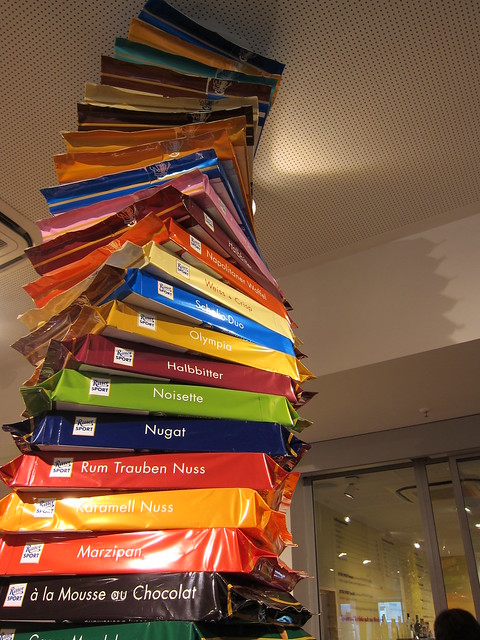
The biggest part of the allure (frankly, the only thing to do there besides eat chocolate or buy chocolate) is to make your own Ritter Sport chocolate bar. The fountains of chocolate flow freely,
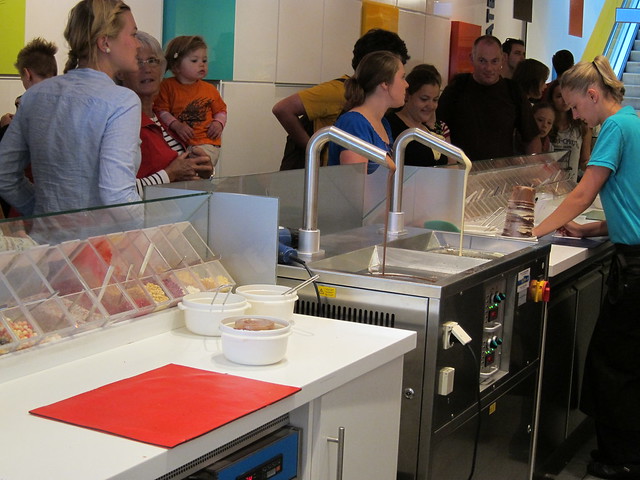
and after you have them mix your ingredients and chocolate to the mold and it has set in the fridge for 35 minutes, you get these:

And when they come out of the mold, they look just like this:

Sara, whose taste buds seemed to be superior to mine for this trip, got almond/raspberry, and I got sour cherry/hazelnut. They were both amazing. We're keeping these Ritter Sport make-you-own-chocolate photos as a sort of documentation on the birth of our first bars of chocolate. We hope to return.
The last thing we did (and photographed) in Berlin was a trip to the Pergamon museum, the second most visited musem in Europe (after the Louvre). Sara, who had
been to the Pergamon last fall, decided to take advantage of being in a city with a real population and went to see Pixar's Brave in English (she wasn't thrilled with the movie, but the experience was nice). I tackled the Pergamon on my own and, armed with my philosophy of don't-try-to-see-everything, really enjoyed it. The great altar:

The frieze around the great altar:

The market gate:
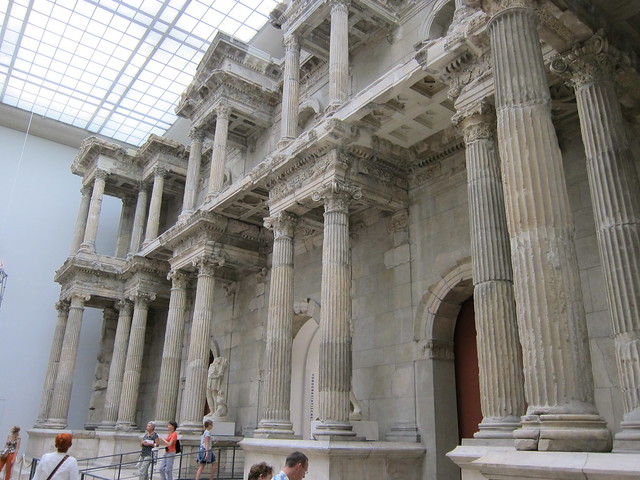
And the Ishtar gate:
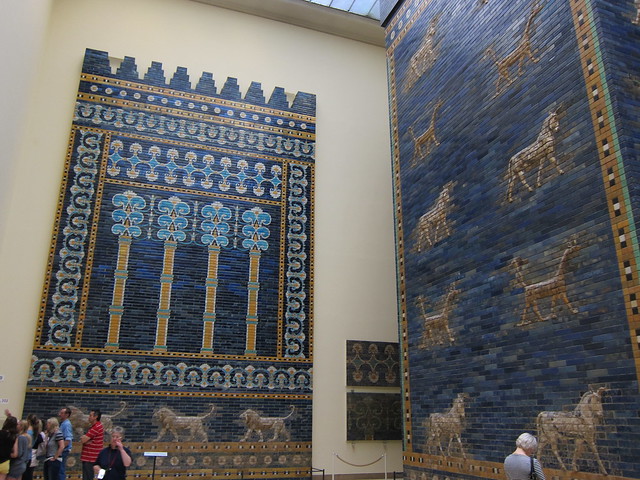
They were all phenomenal in scale and detail--it's really amazing to think of the man hours that must've gone into those works. I was a little bummed, though, when every massive object (the ones shown above) had a disclaimer: "Due to space/transportation/budgetary considerations, this is only a fraction of the XXX. The real XXX was approximately five times taller and three times wider and could NEVER be housed in a museum." The whole point of having these objects is to wow us with their magnitude and gravitas, then they tell you that they only caught a fraction of it. I was a little underwhelmed, but still, it's a fantastic museum in one of my favorite places ever.
*The votes, since they tend to follow party blocs, tend to be easy to count. However, there is no electronic voting in Germany and, if it's a close call, the president can call for the Hammelsprung (literally, ram's leap). Then, each member of parliament stands up and leaves the plenary hall. Then, when their name is called, they walk through a door labeled Yes, No, or Abstention. It must take a long time for the 622 members of the Bundestag, but I bet the count is accurate.
